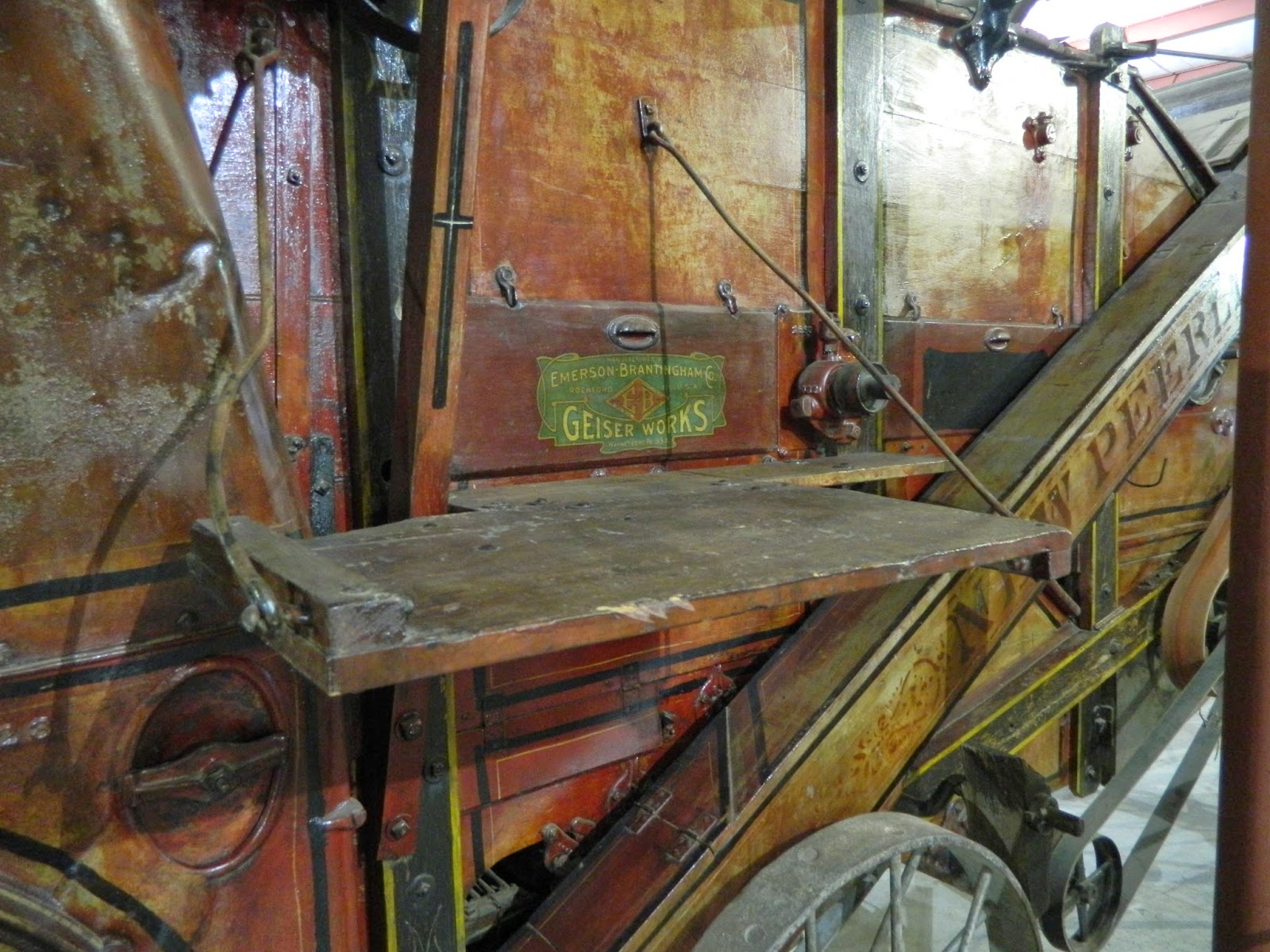This threshing machine – sometimes called a thrashing machine, thresher, or separator – was made by the Emerson-Brantingham Company at its Geiser Works factory in Waynesboro, Pennsylvania. Emerson-Brantingham, based in Rockford, Illinois, acquired the Geiser Manufacturing Company in 1912, the maker of the Peerless Thresher. In that same year, the company also acquired Reeves & Company, a firm that made the Farmer's Friend stacker.
Like the Sawyer-Massey and J. I. Case threshers here in Stuhr Museum's exhibit, this Emerson-Brantingham model was used to separate the edible part of grain from the rest of the plant. Before the development of the threshing machine, farmers and their families or hired hands usually crushed the grain plants (hay, chaff, and kernels) on the floor of their barns or on a specially created indoor or outdoor threshing floor.
The farmers, family members, and hired hands would stomp on the grain themselves, walk animals on top of the grain, or beat the grain with a flail to loosen the chaff from the kernels. Taking advantage of the breeze to separate the straw from the rest of the grain, they swept up the remaining grain to be further processed in a fanning mill or through winnowing which separated the chaff from the kernels. This was time-consuming and tiring work.
With the development of threshing machines, the time spent separating the kernels from the rest of the grain plant was significantly shortened. Instead of hauling the cut and bundled grain to the barn to be separated, the thresher could be hauled out into the field along with a steam engine or tractor. As the whole grain plants were carried to the thresher in wagons, the farmers or hired hands pitched the grain plants onto a conveyor at one end of the machine. Powered by the steam engine or tractor, the thresher's conveyor carried the grain plants into the thresher body where it first separated the straw from the chaff and kernels. The thresher then loosened and separated the kernels from the chaff, emptying the kernels into a wagon to be taken to market, and emptying the rest of the plant into a pile to be used as fodder, to be composted into the ground, or to be burned.
Notes
Information on the 1912 purchase of the Geiser Manufacturing Company and Reeves & Company can be found in The Implement Age, vol. XV, no. 5 (August 3, 1912), p. 20.Information on the New Peerless thresher is from C. H. Wendel, Encyclopedia of American Farm Implements & Antiques, 2nd ed. (Iola, WI: Krause Publications, 2004), p. 412.
In addition, Emerson-Brantingham also purchased the Gas Traction Engine Company, the maker of the Big Four tractor. There is a Big Four tractor made by Emerson-Brantingham here in Stuhr Museum's exhibit.

No comments:
Post a Comment